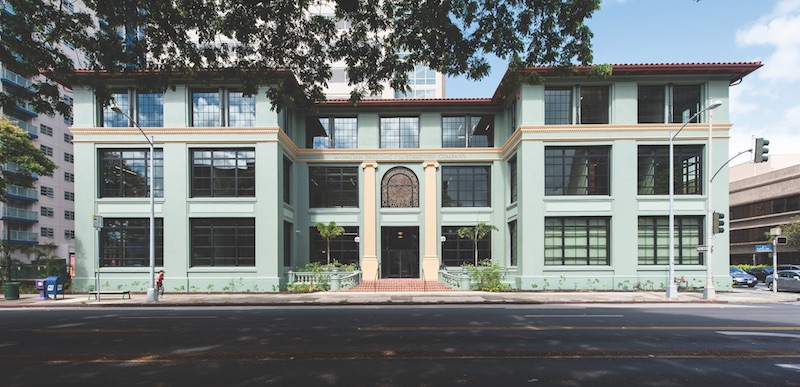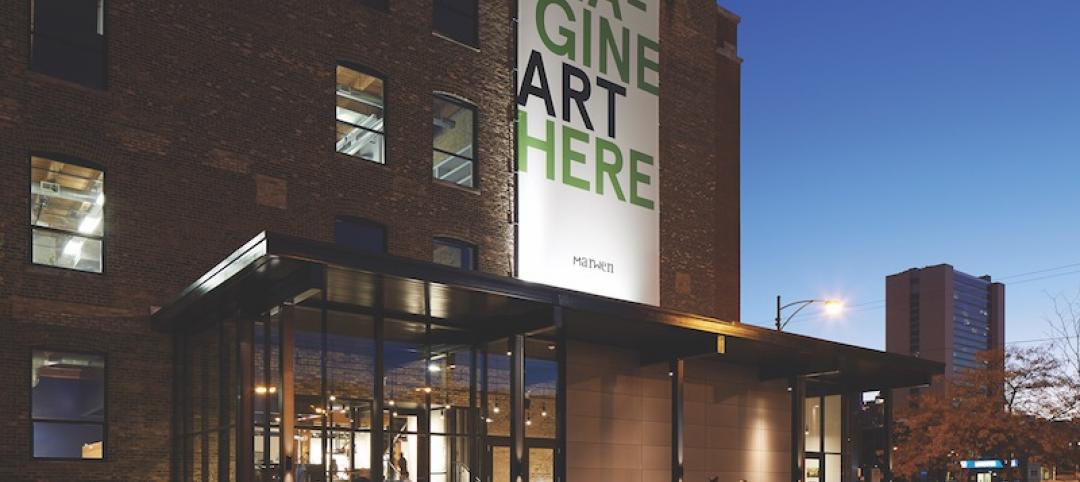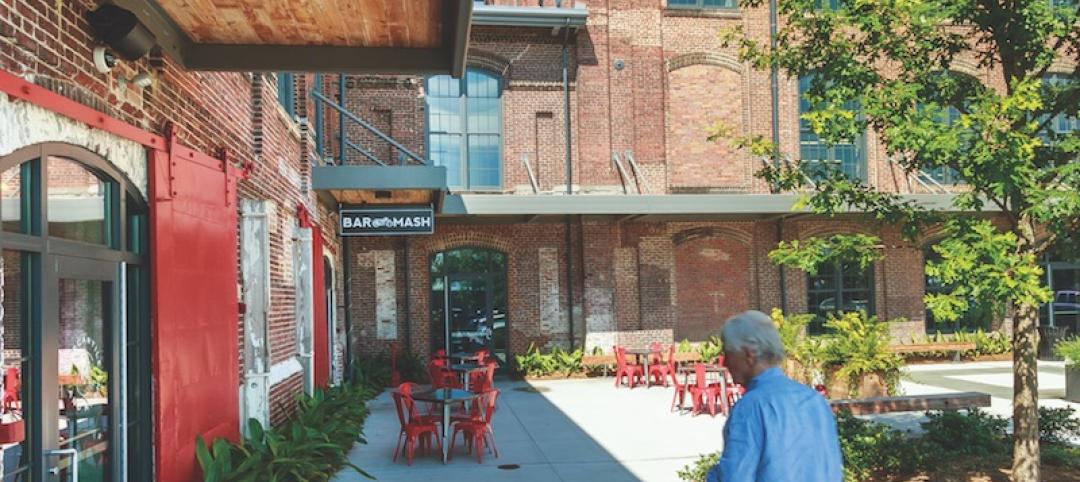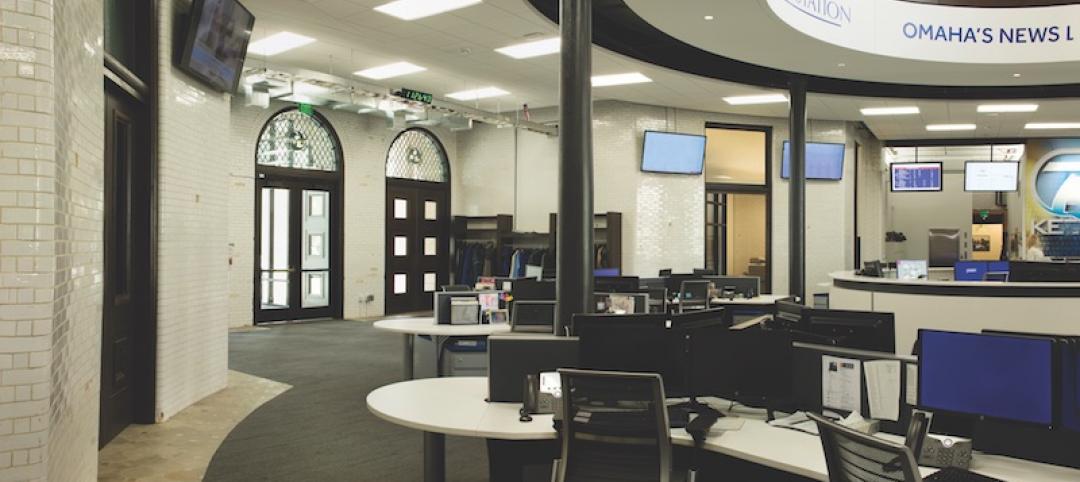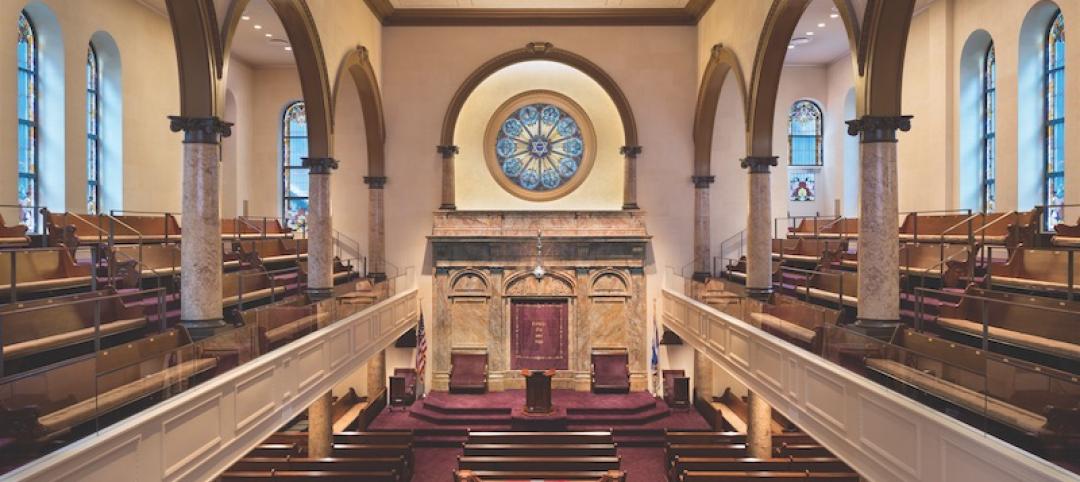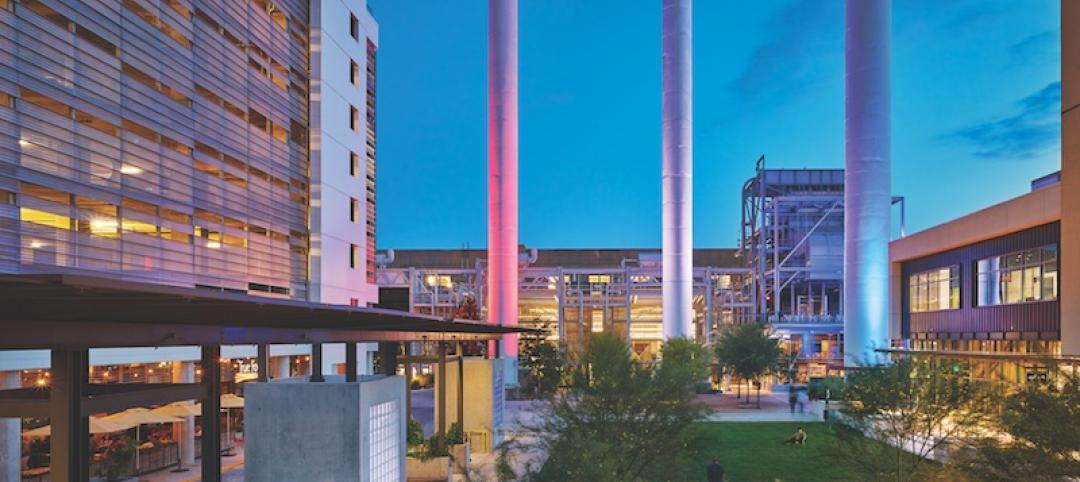Once home to the Honolulu Advertiser—the city’s largest daily—this 1929 Beaux Arts–style building has been a landmark in Honolulu’s Kakaako neighborhood for nearly 90 years. The three-story structure features a distinctive mint-green terra cotta exterior, Spanish-tile hipped roof, and twin roof towers. It is listed on both the National Register and the State Register of Historic Places.
In the 1990s, the owner, Gannett Pacific, put the property on the market. There it would sit for seven years, during which it was designated a Most Endangered Site by the Historic Hawaii Foundation.
In 2012, developer Downtown Capital purchased the 3.7-acre property for $22 million with plans for two condo towers sandwiching a large parking structure.
The condo development, 801 South Street, was completed in 2015 (Tower A) and 2017 (Tower B). The two-story printing press shop had to be demolished, but the main historic structure was still somewhat intact. It was in bad shape, with no solid plans for its next life.
By chance, Hawaiian Dredging Construction Company, the contractor for 801 South Street, was looking for a new headquarters. The GC snatched up the Advertiser Building in 2016 with plans to restore the structure.
The contractor and the design firm, Mason Architects, collaborated with the preservation board to replace the original windows with high-efficiency aluminum units to match the original steel windows. The roof was insulated to R-40. The southern elevation that had been removed during the press room demolition was rebuilt to match the detail of the historic façade.
The team conducted careful restoration work on the terra cotta cladding, decorative interior frescos, two interior light posts, and classical balusters at the entry.
The sprinkler heads required for the lobby were concealed by running the water line through the overhead floor, as the decorative ceiling in the lobby was directly applied to the structural concrete floor. Wood-block flooring from the print press shop was salvaged for use in the second-floor executive lobby.
The project achieved LEED Gold certification.
Bronze Award Winner
BUILDING TEAM Mason Architects (submitter, architect) Hawaiian Dredging Construction (owner, GC) Baldridge & Associates (SE) Dorvin D. Leis Co. (mechanical/plumbing engineer) A-1 A-Lectrician (electrical engineer) DETAILS 30,000 sf Total cost $9.5 million Construction time October 2015 to May 2017 Delivery method Design-build
CLICK HERE TO GO TO THE 2018 RECONSTRUCTION AWARDS LANDING PAGE
Related Stories
Reconstruction Awards | Nov 16, 2016
Reconstruction Awards: Marilyn I. Walker School of Fine and Performing Arts, Brock University
The five-story brick-and-beam structure is an adaptive reuse of the Canada Hair Cloth Building, where coat linings and parachute silks were once made.
Reconstruction Awards | Nov 16, 2016
Reconstruction Awards: Marwen
Marwen currently offers 100 studio courses to 850 underserved students from 295 schools and 53 zip codes.
Reconstruction Awards | Nov 16, 2016
Reconstruction Awards: The Cigar Factory
The Cigar Factory was originally a cotton mill but became the home of the American Cigar Company in 1912.
Reconstruction Awards | Nov 16, 2016
Reconstruction Awards: St. Patrick's Cathedral
The cathedral, dedicated in 1879, sorely needed work.
Reconstruction Awards | Nov 15, 2016
Reconstruction Awards: Lovejoy Wharf
After demolishing the rotten wood wharf, Suffolk Construction (GC) built a new 30,000-sf landscaped quay, now known as Lovejoy Wharf.
Reconstruction Awards | Nov 15, 2016
Reconstruction Awards: KETV-7 Burlington Station
The 1898 Greek Revival train terminal, which was listed on the National Register of Historic Places in 1974, had been abandoned for nearly four decades.
Reconstruction Awards | Nov 14, 2016
Reconstruction Awards: The Gallery at the Three Arts Club
On the exterior of the building, masonry and terra cotta were revitalized, and ugly fire escapes on the south façade were removed.
Reconstruction Awards | Nov 14, 2016
Big-box store rescaled to serve as a preventive-care clinic
The hospital was attracted to the big box’s footprint: one level with wide spans between structural columns, which would facilitate a floor plan with open, flexible workspaces and modules that could incorporate labs, X-ray, ultrasound, pharmacy, and rehab therapy functions.
Reconstruction Awards | Nov 14, 2016
Fire-charred synagogue rises to renewed glory
The blaze left the 110-year-old synagogue a charred shell, its structural integrity severely compromised.
Reconstruction Awards | Nov 11, 2016
Adaptive reuse juices up an abandoned power plant
The power plant was on the National Register of Historic Places and is a Recorded Texas Historic Landmark.


